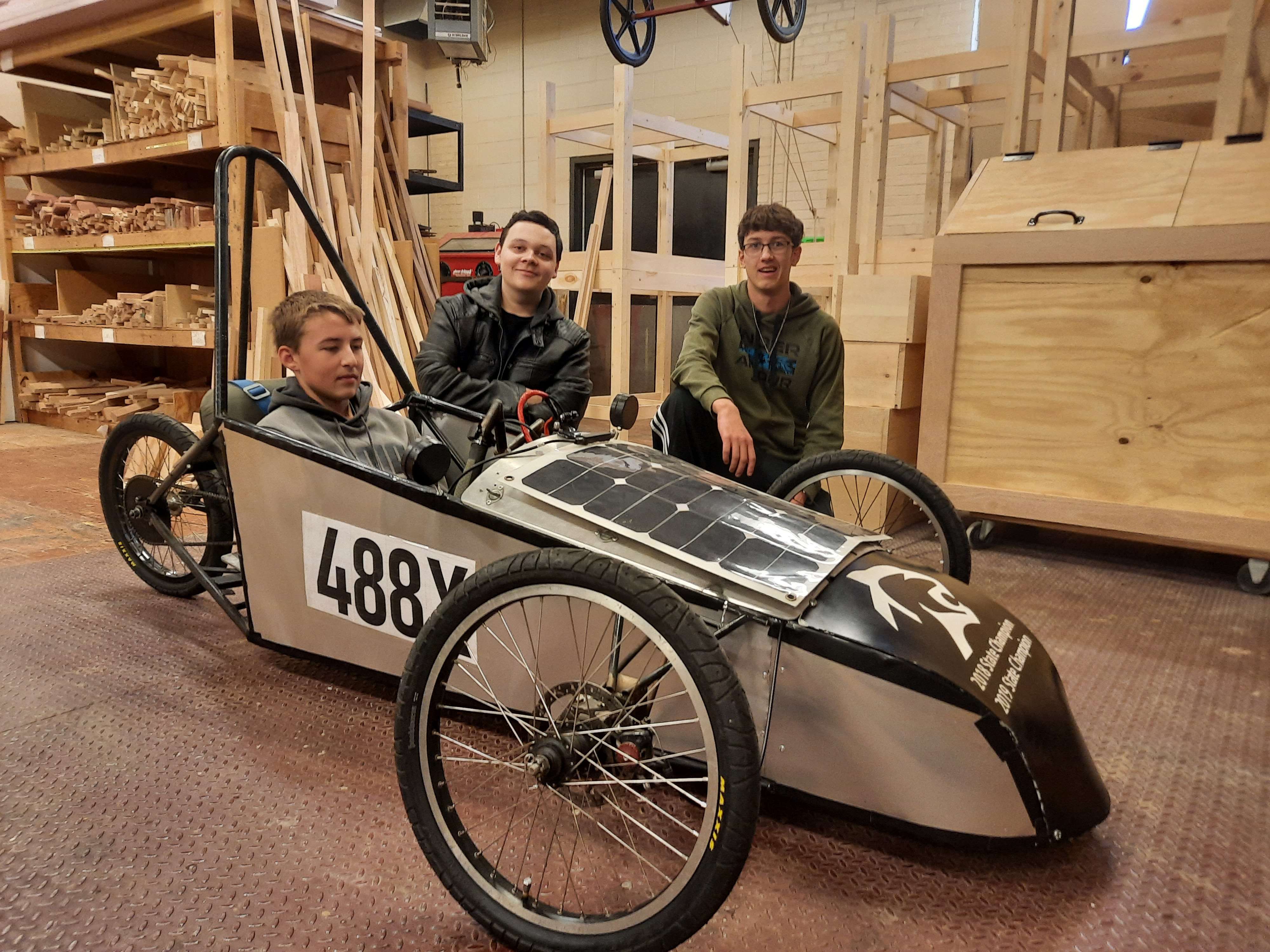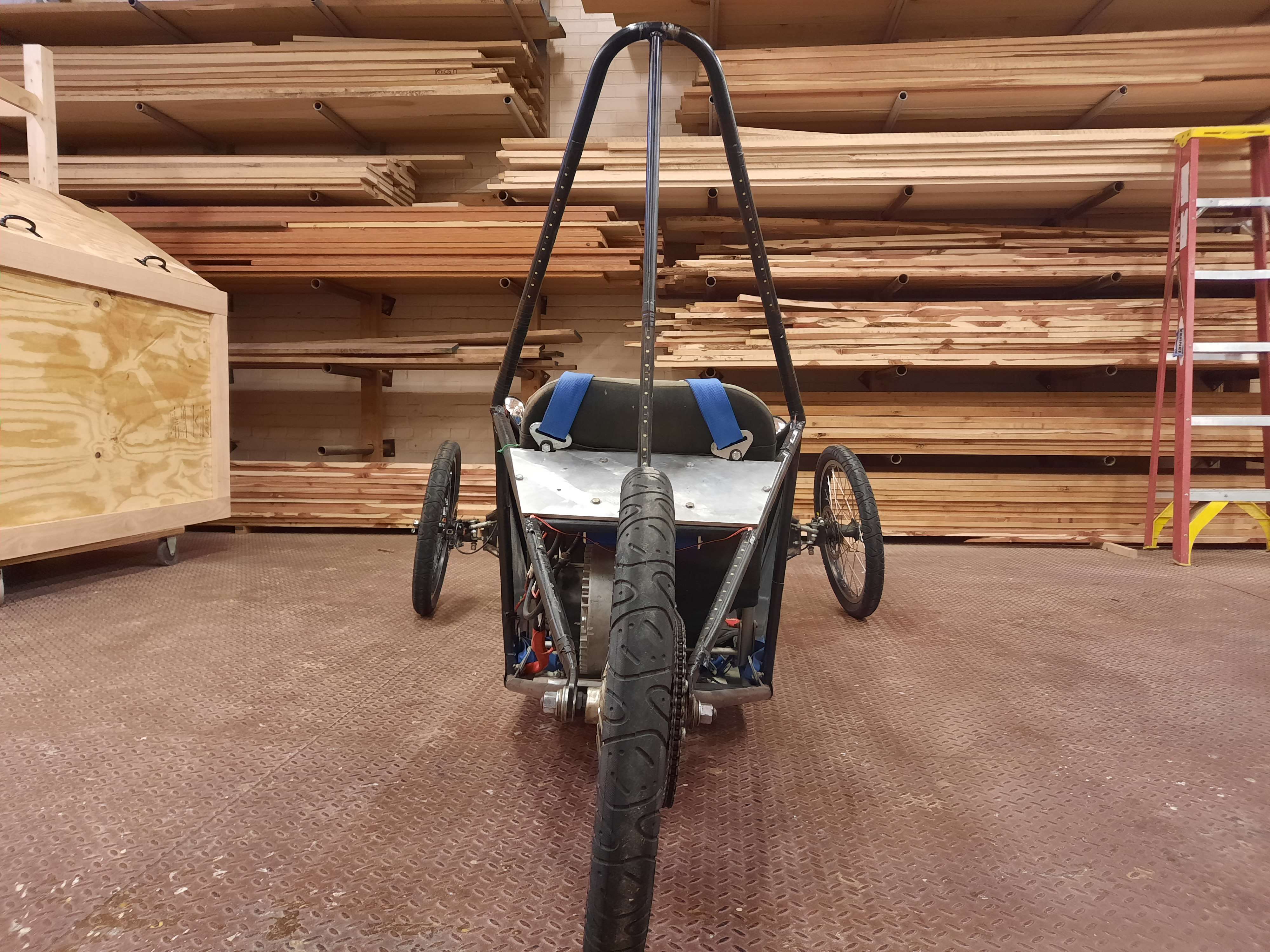
By MIKE COURSON
Great Bend Post
Travis Straub's Vocational Technology Club (VTC) at Great Bend High School was on its way to being an electric car powerhouse. The Panthers won state championships in 2018 and 2019, and then-student Tristen Milligan had rewired the car for a successful 2020 season. Then COVID-19 hit. With two years of no racing, Straub lost all of his racers and all of his students with the ability to train future students. This year, 13 GBHS students have joined the after-school club to restart the program.
"I was starting from scratch," Straub said. "I'm basically trying to train multiple kids how this thing goes together, how you take it back apart, figure out the brake system, the electrical system, and also on race day, how to race and how to prepare for the race."
Straub, the woodworking instructor at GBHS, started the VTC in 2006. Wheatland Electric had used students to build a car and asked Straub to build and race electric cars against other schools. A new car can take hundreds of hours to build from scratch, and the club purchased its current car from La Crosse High School and rewired it.

Schools compete in a practice-type race each fall against about a dozen Kansas teams, as well as cars from Missouri and Nebraska. Straub took six of his club members to Frontier Park in Hays for this autumn's race. That track features mostly smooth asphalt and charts in at just longer than a mile. The team that completes the most laps in an hour wins. Sophomore Josh Manning did the driving.
"It's pretty fun," he said. "You don't realize how quick you're going in the car. I was told after the race I did 45 or 46 laps. It didn't feel like that. It felt like I did 10 or 20."
Much preparation goes into each race. The team members scout the track for potholes and tricky turns. They spread out during the race as a makeshift pit crew with Straub patrolling in his golf cart should an emergency arise.

"We have to get the batteries in," said Straub. "We're also charging the batteries before the race. We're checking every nut and bolt to make sure everything is tight."
To level the playing field, the cars must transport 180 pounds. For a lightweight like Manning, that meant placing a 35-pound weight on the front of the car, more weight in the back, and some ankle weights spread around inside the car.
The real racing season takes place in the spring with a series of three races. The best finishes, two out of those three, will go on to compete for a state championship. Teams must also write a paper about the history and evolution of their car.

Juniors Alex Allen and Matthew Williams have been instrumental in keeping the current car up and running. Both plan to use the knowledge gained from the club down the road.
"I want to get some sort of degree in engineering, cars, and such, and one day I hope to be a mechanic," said Allen, "so I figured this would be a good way to learn a little bit of that."
"I want to go into some type of engineering degree, and I figured this was a good way to get it kickstarted," Williams said.
As one might expect in a race, there are always issues. In the fall run in Hays, a Kansas City team rolled up on the back of the Great Bend car. "They can take a hit," said Williams. "During the race, a car came up and hit the back of the tire and made it all wonky. It continued to run another 20 laps without any problems."
Straub selects the race-day driver off experience and other qualifiers, but each member of the team has driven the car in practice runs at the skate park.
"Of course, it broke down during the practice race, which was a good thing, actually, instead of being the actual race," Straub said. "We were able to do some problem-solving while we were there and see what was going on."
Using aerodynamics and just three wheels instead of four to minimize ground resistance, the current car has gone a maximum of 53 laps on a course with a max speed of over 40 miles per hour.
"We've had this car up to 43 miles an hour, depending on how it's geared and the type of track we're running," said Straub. "When you're three inches off the ground, you feel like you're doing 90.
"That's one of the amazing things about this. These are bicycle parts we're putting on a vehicle that weighs a couple hundred pounds going up to 40 miles per hour. Bicycles aren't designed to do that at at that kind of weight and speed. We're pushing the limits on bicycle parts."




